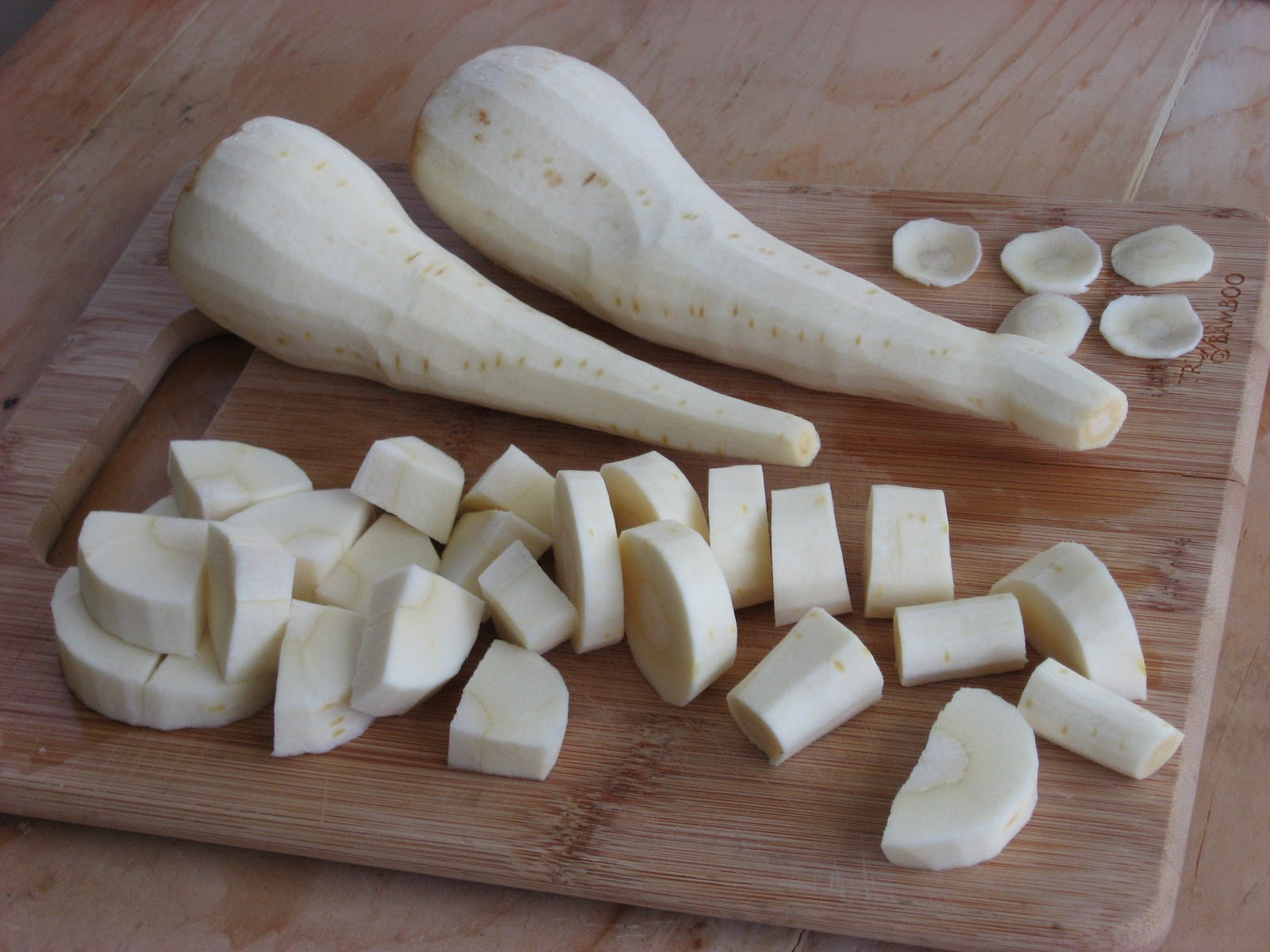
Per serving: 195 calories, 5 g protein, 33 g carbohydrate, 6 g fat (3 g saturated fat), 18 mg cholesterol, 5 g fiber, 6 g sugar, 268 mg sodium. Sprinkle cheese and breadcrumbs and continue baking, uncovered, 30 minutes or until golden brown. Remove foil and pour cream over vegetables. Cover pan tightly with foil and bake 1 hour.ģ.

Repeat layering, using remaining vegetables and seasonings. Top with half the sauteed leeks, garlic, and parsnips, and season with half the salt, pepper, nutmeg, and thyme. Arrange half the potatoes in the dish, overlapping slightly. Coat an 8- by 12-inch glass baking dish with cooking spray. Add garlic, and continue cooking 2 to 3 minutes.Ģ. Saute leeks until caramelized, about 7 minutes. Spray and heat a large nonstick skillet over medium heat.
#Parsnips nutritional facts plus#
Recipe: Parsnip and Potato GratinĢ cups (about 2 large) thinly sliced leeksġ pound Yukon Gold potatoes, thinly slicedġ pound parsnips, peeled and thinly slicedġ cup, plus 2 Tbsp, nonfat, low-sodium chicken brothġ.

In Europe, parsnips were used to sweeten jams and cakes before sugar was widely available.

This happens after the first frost, when the vegetable is still in the ground. The parsnip's unique flavor comes when its starches change to sugar. The two veggies are close relatives.īut it's not related to the "cow parsnip," which is a member of the parsley family. It's no coincidence that the parsnip resembles the carrot. They are a good source of vitamin C (11% of the recommended daily allowance), folate (11%), and manganese (10%). Half a cup of sliced, cooked parsnips has 3 grams of fiber and only 55 calories. People used to believe (falsely) that eating parsnips could relieve a toothache or tired feet. Potassium is an important component of cell and body fluids that helps controlling heart rate and blood pressure by countering effects of sodium.Parsnips are native to Europe and Asia and were introduced to North America in the 17th century.
#Parsnips nutritional facts free#
Its anti-oxidant property helps protect from diseases and cancers by scavenging harmful free radicals from the body.įurther, the root is rich in many B-complex groups of vitamins such as folic acid, vitamin B-6 (pyridoxine), thiamin, and pantothenic acid as well as vitamin-K and vitamin-E.įurther, it also has healthy levels of minerals like iron, calcium, copper, potassium, manganese and phosphorus. It helps the human body maintain healthy connective tissue, teeth, and gum. Vitamin-C is a powerful water-soluble antioxidant, readily available to us from natural sources. Several research studies from scientists at the University of Newcastle, Tyneįound that these compounds possess anti-inflammatory, antifungal, and anti-cancer function and offer protection from colon cancer and acute lymphoblastic leukemia (ALL).įresh roots are also good in vitamin-C provide about 17 mg or 28% of RDA. Adequate fiber in the diet helps reduce blood cholesterol levels, obesity, and constipation conditions.Īs in carrots and other members of Apiaceae family vegetables, parsnip too contains many poly-acetylene anti-oxidants such as falcarinol, falcarindiol, panaxydiol, and methyl-falcarindiol. Nonetheless, its sweet, juicy root carries no cholesterol, is rich in several health-benefiting phytonutrients, vitamins, minerals, and fiber. It has calories (100 g provide 75 calories) equal to that of some fruits like banana, and grapes. 100 g root provides 4.9 mg or 13% of fiber. Generally, parsnip contains more sugar than carrots, radish, turnips. It is one of the excellent sources of soluble and insoluble dietary fiber.

Generally, parsnip contains more sugar than carrots, radish, turnips.


 0 kommentar(er)
0 kommentar(er)
